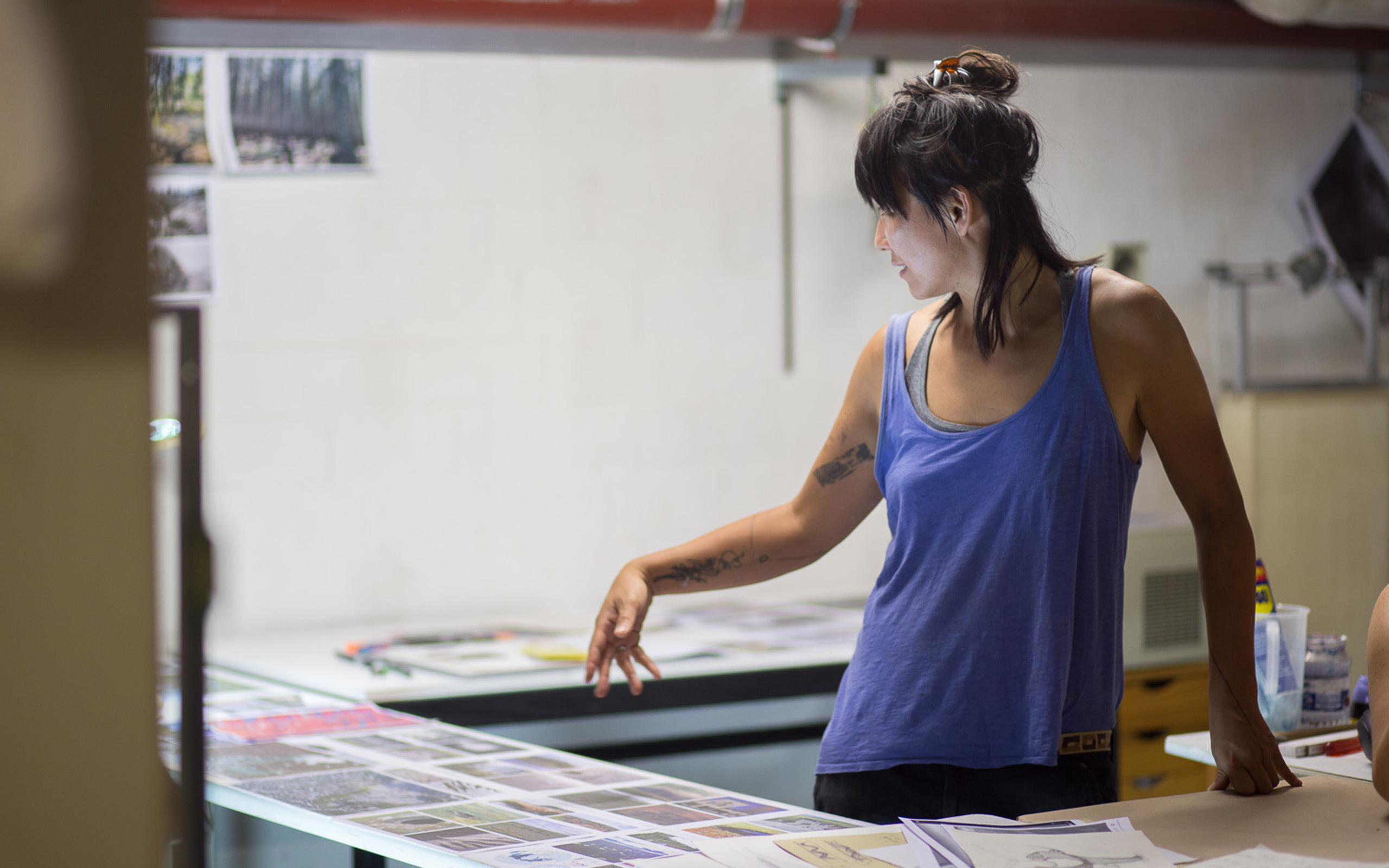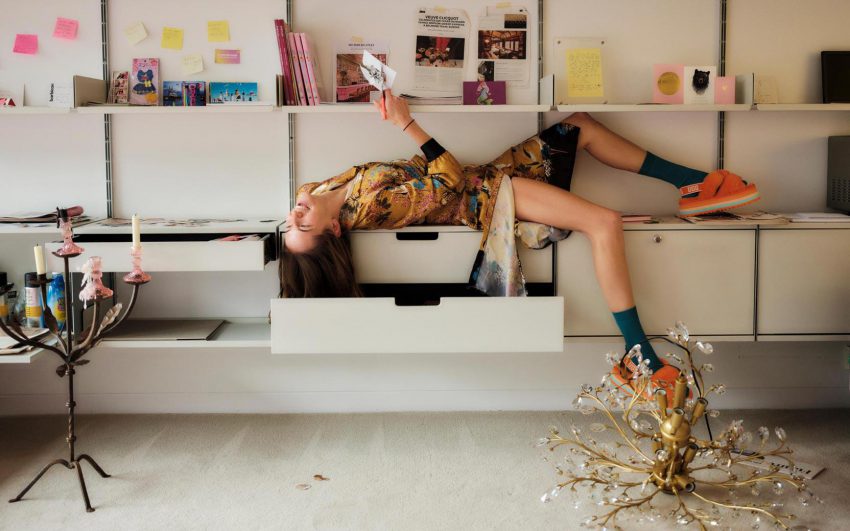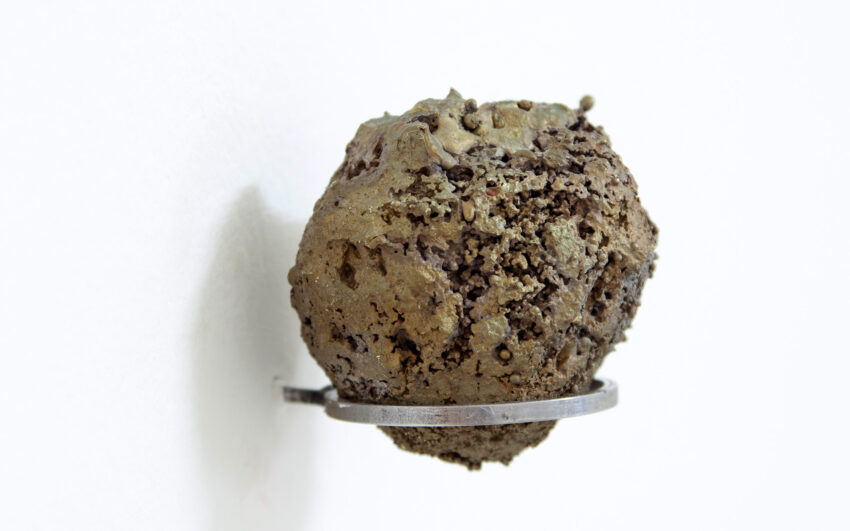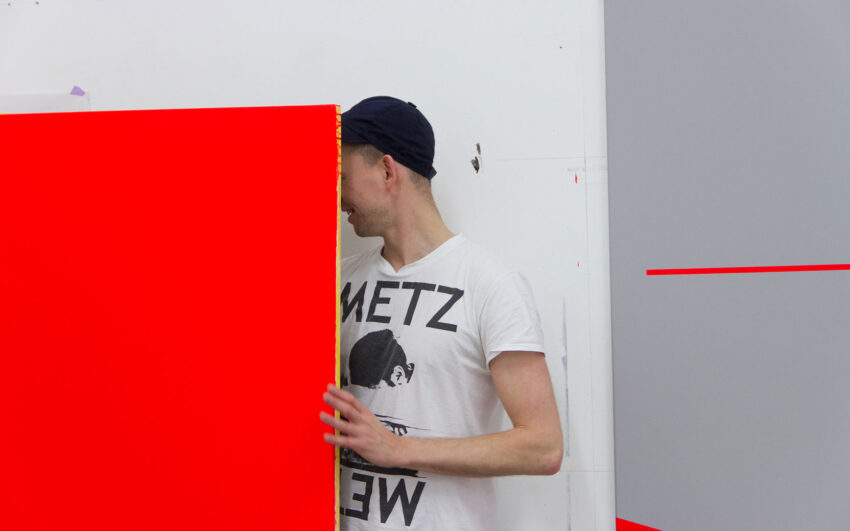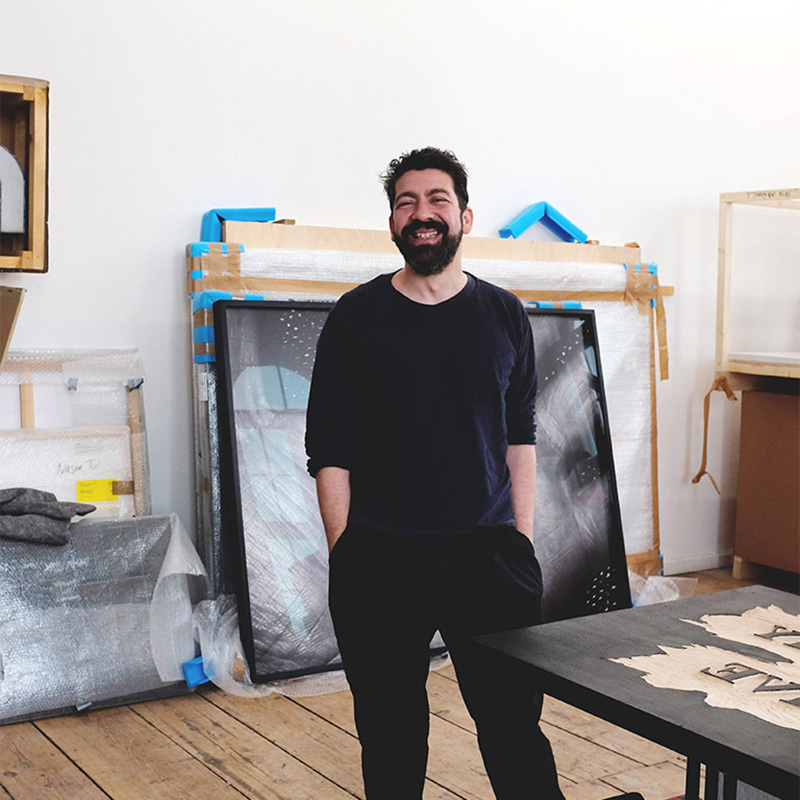It is never boring in Anne Duk Hee Jordan’s universe. Like mini carousels clicking stones fly through the air, water drips and bubbles under pink light, lots of sketches, prints, and models are scattered around, a red bicycle that functions as a “strawberry cannon” leans on the wall. Relentless curiosity leads the artist from work to work and seduces viewers with sensual sophistication and humor confronting them with topics that on second glance are not actually funny.
Duk Hee, you were born in South Korea but grew up in Germany. How does this cultural clash impact your work?
I’ve relatively little relation to my place of birth, because I was adopted at the age of three or four. I grew up in Palatine, a wine area, and I speak this weird dialect. When I really got cracking with it, it was rather the other way around, the Palatine people had the culture clash not me (laughs). Growing up in a rural area makes it a bit more difficult and one begins to question one’s own identity. Later for example, the potato played a large role in my art growing up with potato fields and potatoes – and because the potato is a vegetable that was originally brought to Europe from South America.
Are you referring to the photographic work in which a potato plant is seemingly growing out of a person’s behind?
For example – but I’ve also created an entire installation with the title Compassion. For this work I injected young potato plants with my own blood by which means they received my genes. Ostensibly, I created a new potato. The plants were real and the infusions were fastened on iron rods. An acquaintance of mine who is a nurse took my blood samples every day. The potatoes grew and I built a watering machine for them the electricity for which was generated by the potatoes, this system led to new potatoes which I processed further. Later the potato itself became an object for photographic works and also inspired the video work Lost Princess of Mongolia, which also dealt with the topic of identity.
How did you find your way into creating art?
The way to art was a very long one because I was always on the go. I couldn’t decide. I wanted to study electro engineering, but than I began to study multilingual communication. At age twelve I began to train as a rescue diver, free diver, and deep-sea diver for which I completed the required training. I am also a professional therapist, in the field of psychomotor activity. I have traveled the world for some time and started to study sculpture in Berlin Weissensee at the age of twenty-seven, excited to experiment with various materials. When several professors left, I felt I was not getting ahead and I applied to Olafur Eliason’s Institute for Spatial Experience and was accepted. In 2012 I was accepted as a master student.
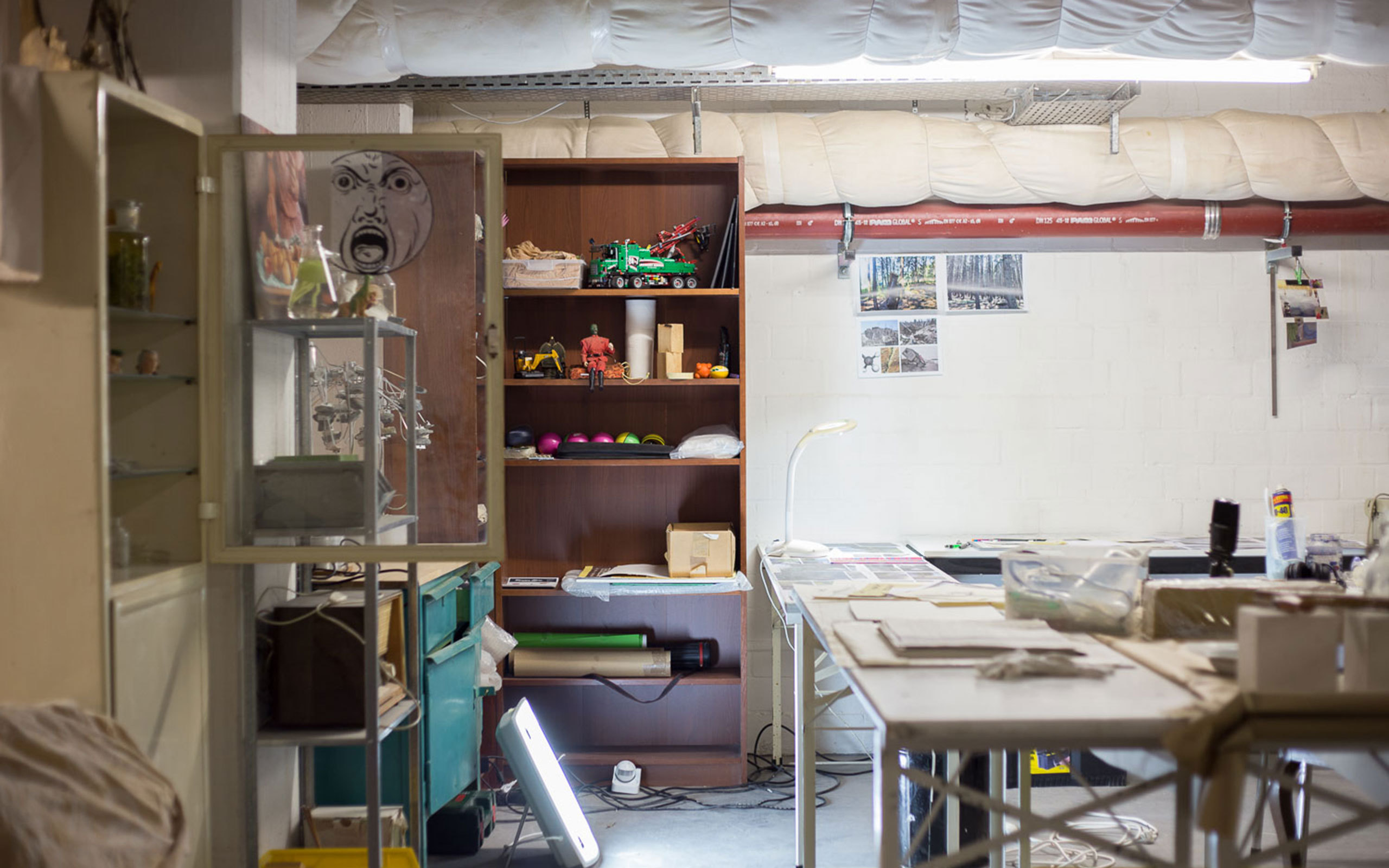
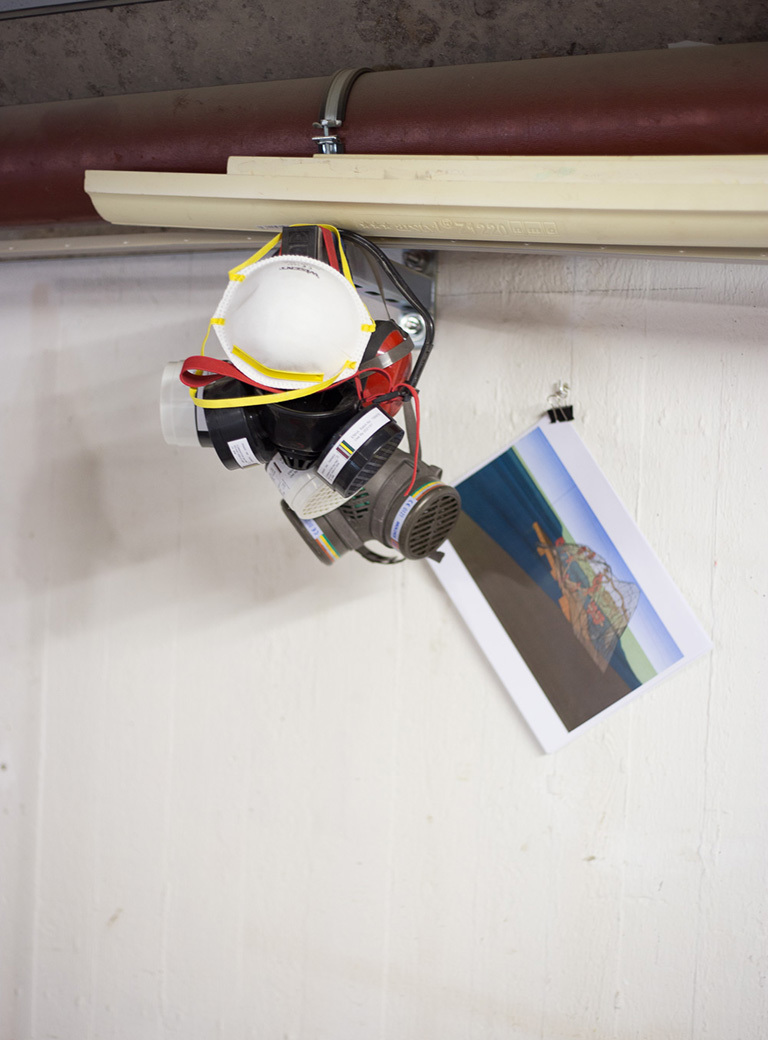
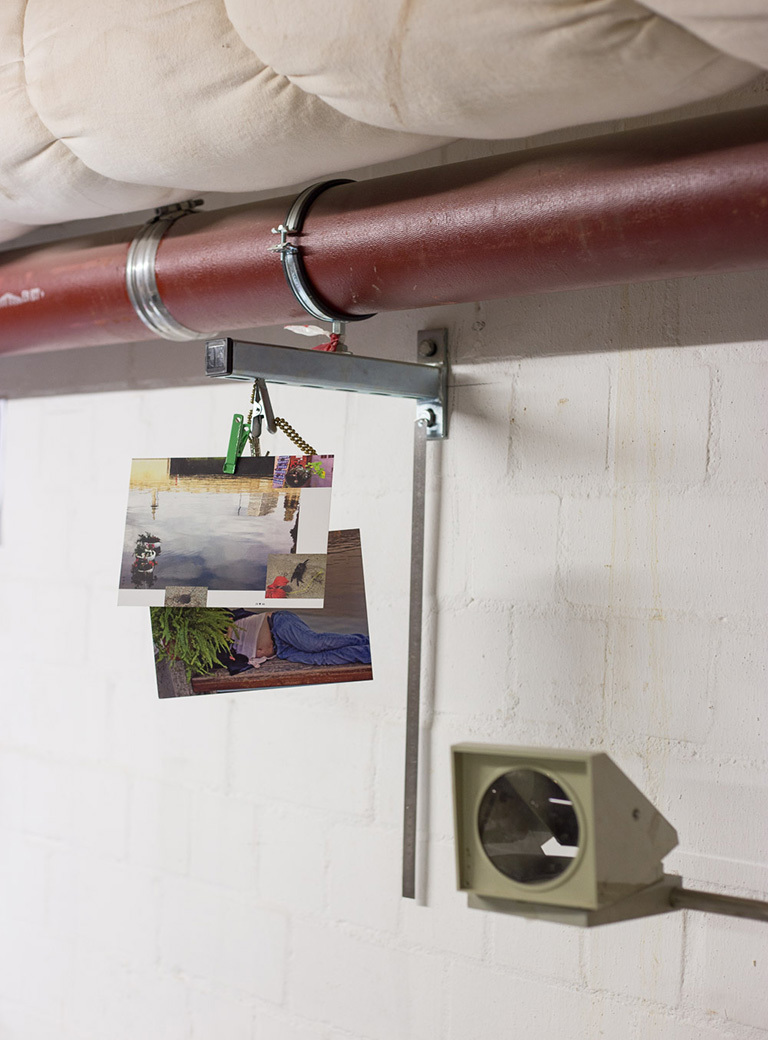
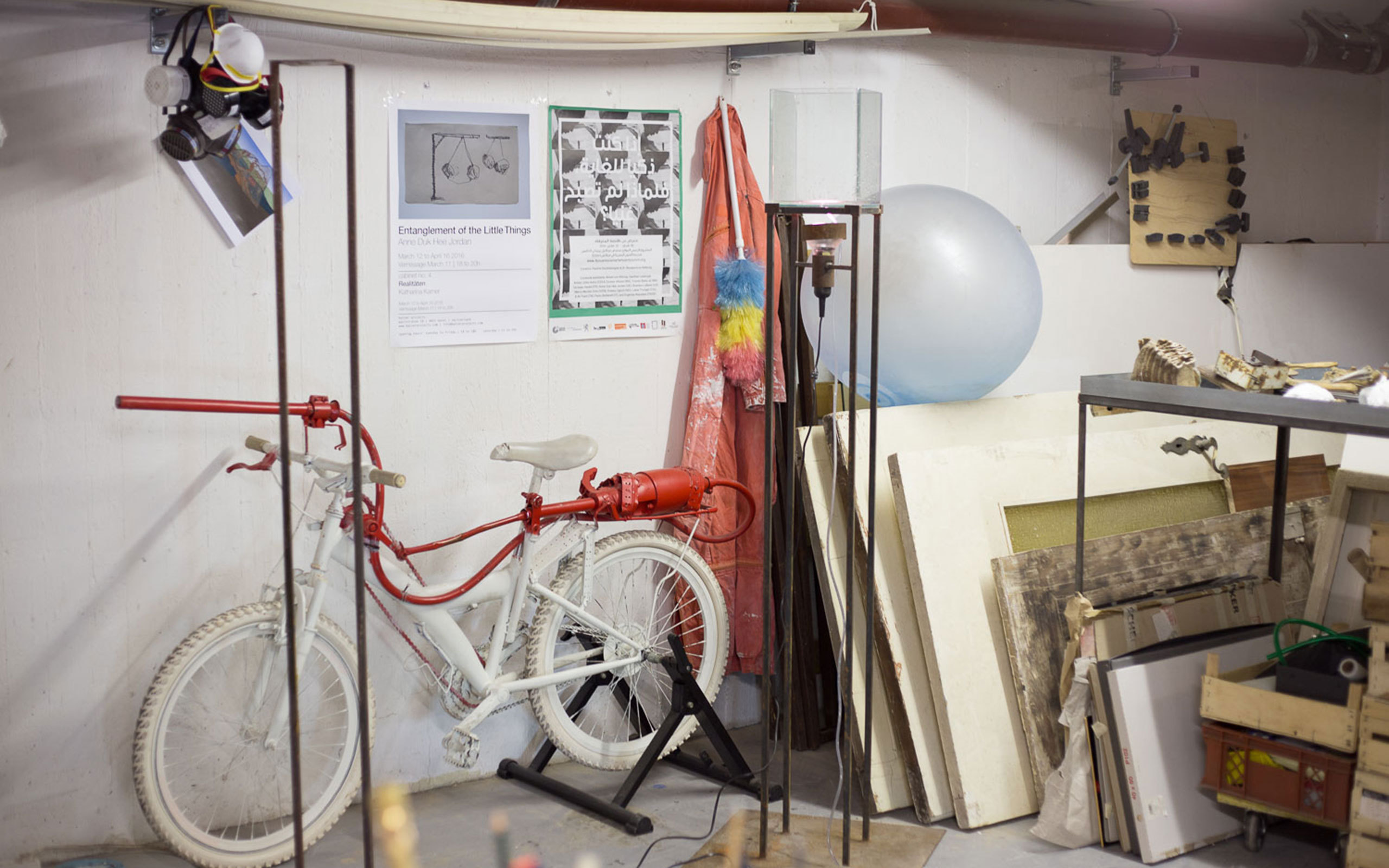
Many still consider being an artist as not a serious profession. How did your environment react when you decided to pursue an artistic career?
“Heavens, do something real!” So. “Don’t you want to learn a real profession first …?”
Well, in some ways, you had virtually done this already…
Exactly... Well, my parents let me do what I wanted, they never interfered, I simply pursued what I wanted…
And for you, is being an artist a profession or a calling?
Both. Well, you can sit in an office for six or eight hours and do something, and that is it. I don’t know about other artists, but art is part of me, I can’t just turn it off. When I go home, my thoughts are still rotating.
What can or ought art in your opinion achieve? Do artists have a particular responsibility?
I think they have! Artists may perhaps have as large an impact as people who lecture about political reforms. Artists can communicate topics quite differently; perhaps not in a stringent, rigid manner but they can communicate concerns in a nonverbal manner… Art is one of the most important media by which to change social and political situations. This is important to me and also to remain open and to communicate. If one can’t do it in large measures, one should at least try in small circles dealing directly with people. This is the only way to change things.
Are there artists who have influenced you strongly or to whom you feel a spiritual affinity?
Jean Tinguely, who created these kinetic works. He has impacted me most. The mechanics in his installations, everything that moved, fascinated me.
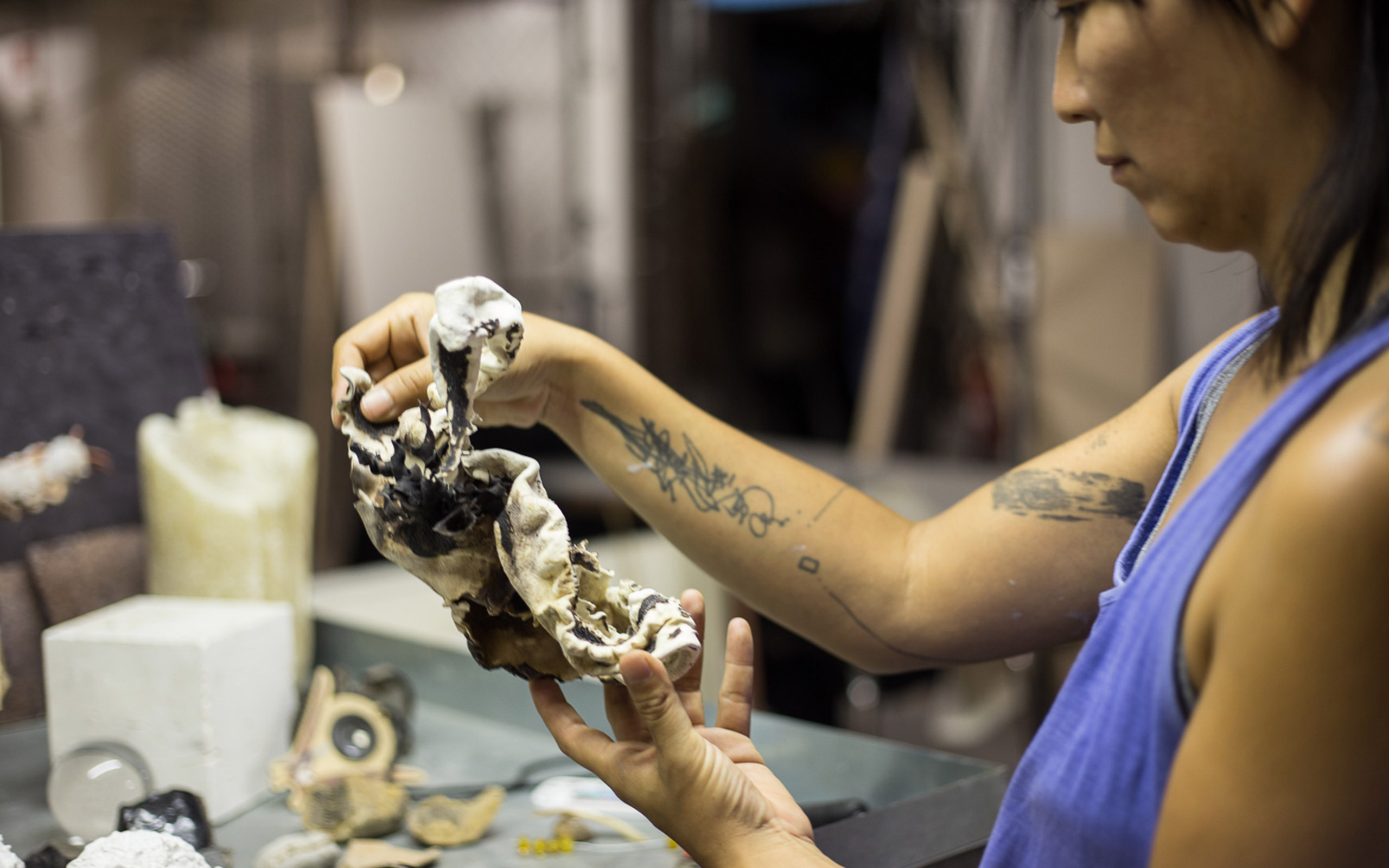
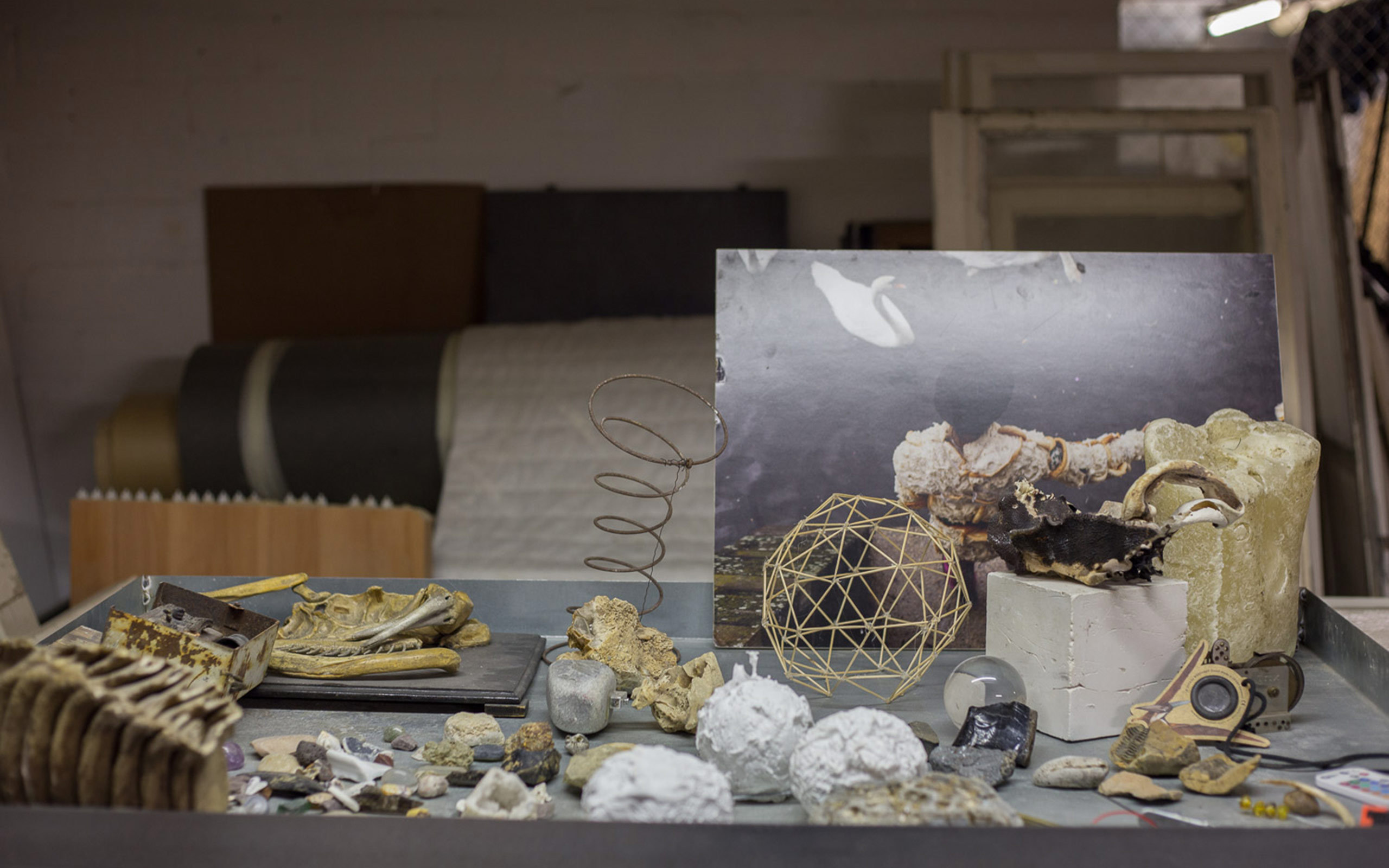
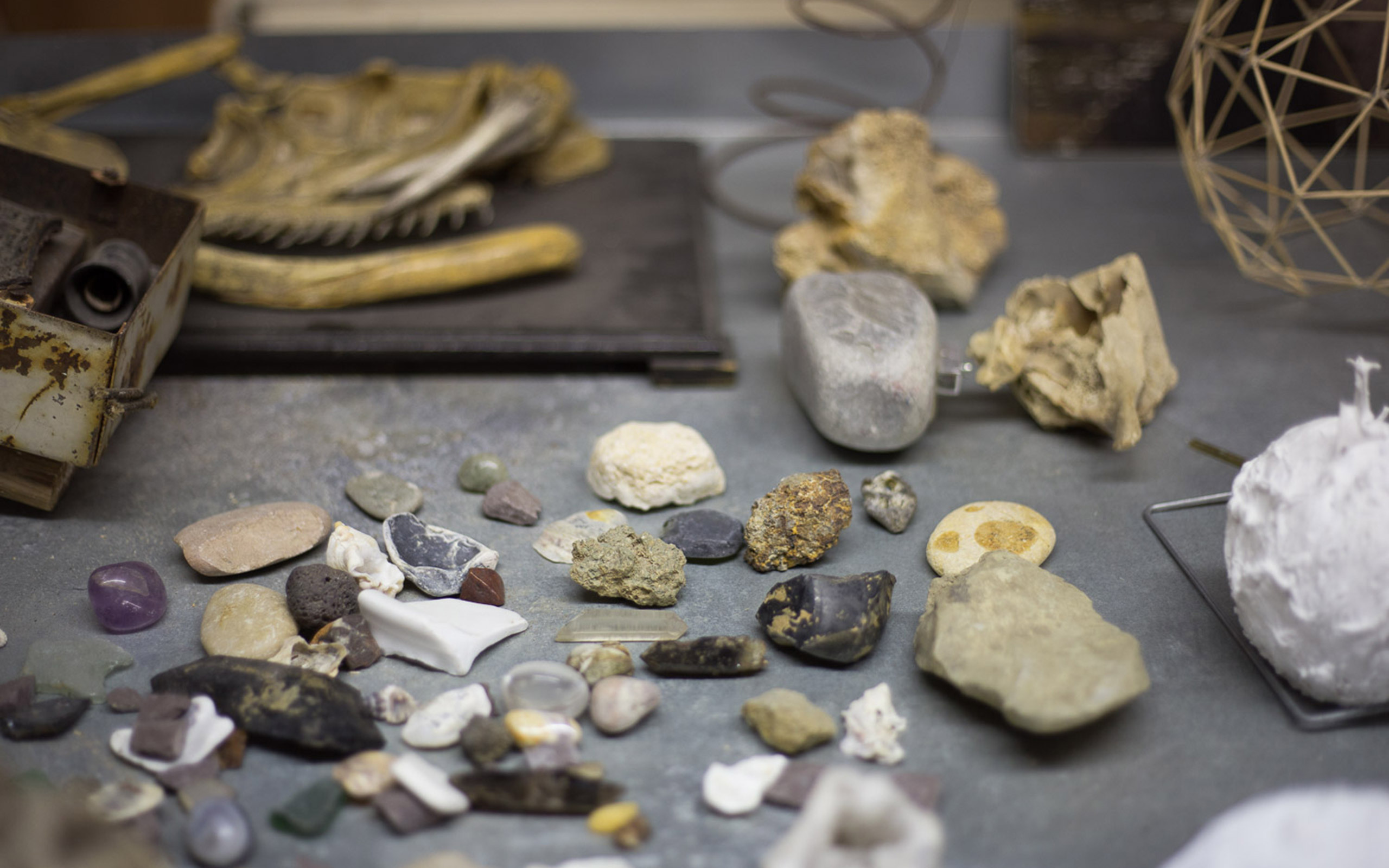
Can you describe in a few words the central interest or topic of your work?
I transform organic or even dead matter in humorous and romantic machines and robots, always with a reference to ecology. Through transformation I make the non-visible visible, depicting biological and chemical processes.
You not only work with installations, your oeuvre comprises a broad media spectrum, even video. And you are also a “food artist”. In your performance Into the Wild you created a menu that can be experienced with all senses.
Only recently did I conceptualize the food performance Into the Wild, and this was possible only because I had for many years made other food stories and learned from the experience. The concept – a completely edible table that dependent on season and on what is available always appears different – can be adapted for ten or two hundred people. I develop and cook a menu that has always an ecological context. As human beings we have to understand that we exist in luxurious circumstances: hunger, eating, and food play a very big role in our economy. It is the first link in the chain. Hunger causes war. And agriculture is responsible for the climate change too: through the sewage treatment plants everything that goes into the ground ends up in the rivers and oceans, as do nanoparticles of silica released from minute tears in the tires of food transportation vehicles. It is a long chain of circumstances and this is precisely what interests me, which is why I do these food performances.
No cutlery is provided in your performances, one eats with one’s hands …
Exactly, one can actually dig through the table. It always surprises me how fascinated people are and what sensual perceptions are experienced on all levels. If one has the impression one eats the table like a goat, one can perhaps begin to understand this perspective: moving from the luxurious to the essential.
You approach your political and social thought-provoking impulses very subtly. What do you think about political art that is rather actionistic?
Actionism when well performed is important. Sometimes it needs a kick, the beat of a drum. What I don’t like is when actionism turns into radical populism that prompts or forces people to act radically or aggressively. That’s not my approach.
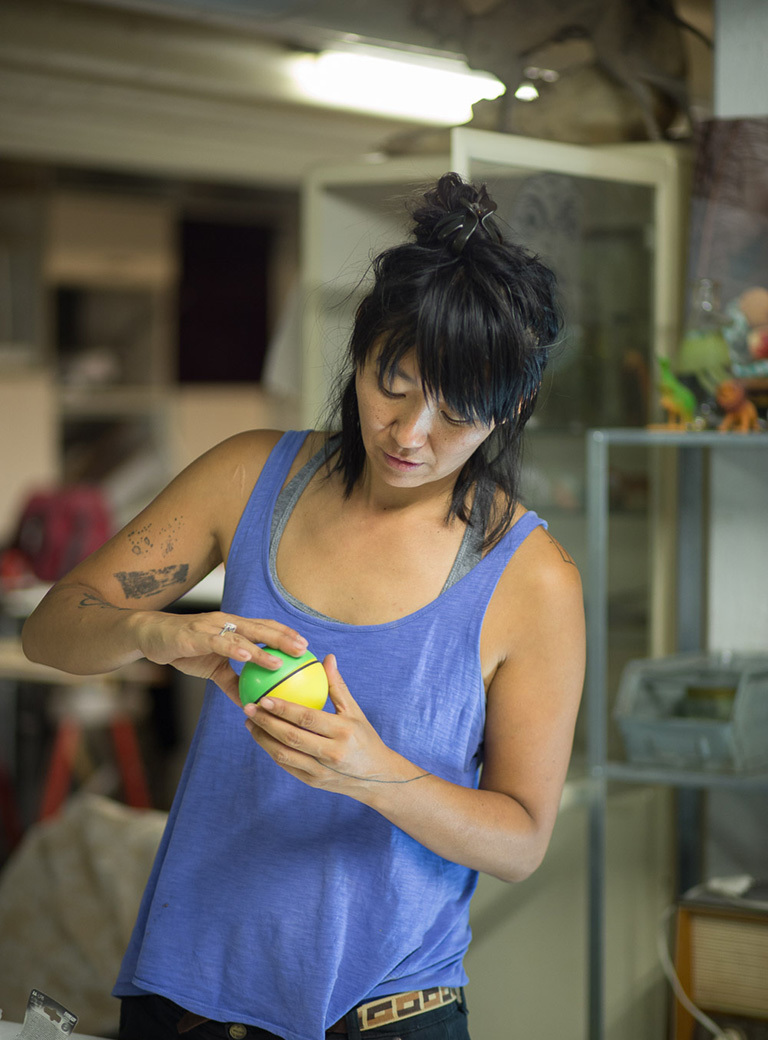
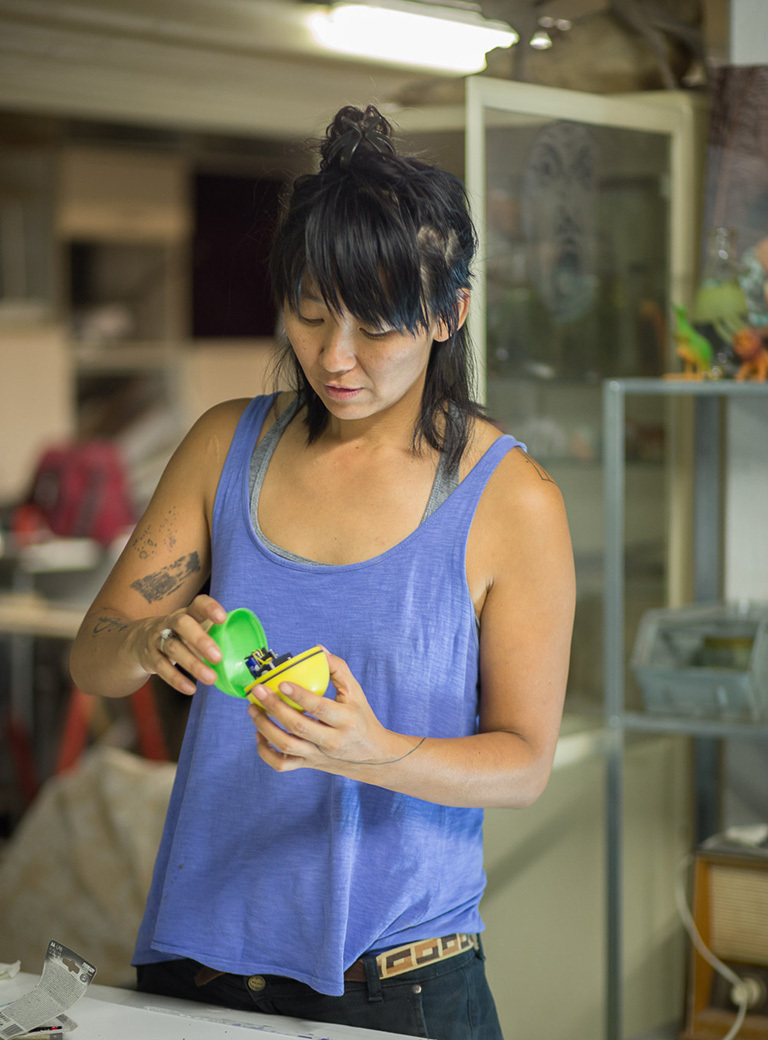
In terms of your work process, do you work with assistants or is making art more of an intimate/individual act to you?
To be candid, I love to have assistants! It is exciting. I can concentrate on other things. My work comprises a lot of research: among other things I build models and then travel to the relevant locations in order to do more research. It happens on many levels. Initially the project for the Beaufort Triennale for example had a completely different form. I made an incredible amount of models and drawings yet the work took a completely different direction and only through the intensive investigation beforehand was I able to realize it. Ultimately, a decision was reached in five minutes after nine months of intensive research.
Occasionally, you include other people in the developmental process of your art. This has resulted in you working with scientists and a forest ranger, among others. How do these people react when they are confronted with an artist’s ideas?
Initially some think I am a bit crazy. For instance, when I made the film Ziggy and the Starfish, a film about changing sexuality in the underwater world, I consulted with scientists about these changes. Afterwards they were completely excited, because I have a very different access yet exactly the same message. As an artist I don’t have to present precise figures. I find it very important to work with two facts but I adapt them communicating in a freer way. I invite the people with whom I work to the exhibitions and the connections remain. For me the work is never completed, the works continue to develop further…
With your participatory installations you often provide a playful approach for people who would not necessarily stop and watch a video.
Yes, that’s true. For the Biennale in Riga I built a huge waterbed for Ziggy and the Starfish, furnished with marine animal pillows. Viewers could lie on the bed and watch the video, which with music from the 1970s is a very sensuous and esthetical film to begin with – very seductive, like a soft porno. Lying on that gigantic waterbed is as if becoming part of the underwater world presented in the film. And that was the idea: that the body adapts itself while watching the film and the changes in the submarine world, and how and why the organisms there are able to adapt themselves so quickly. Human beings can’t do it.
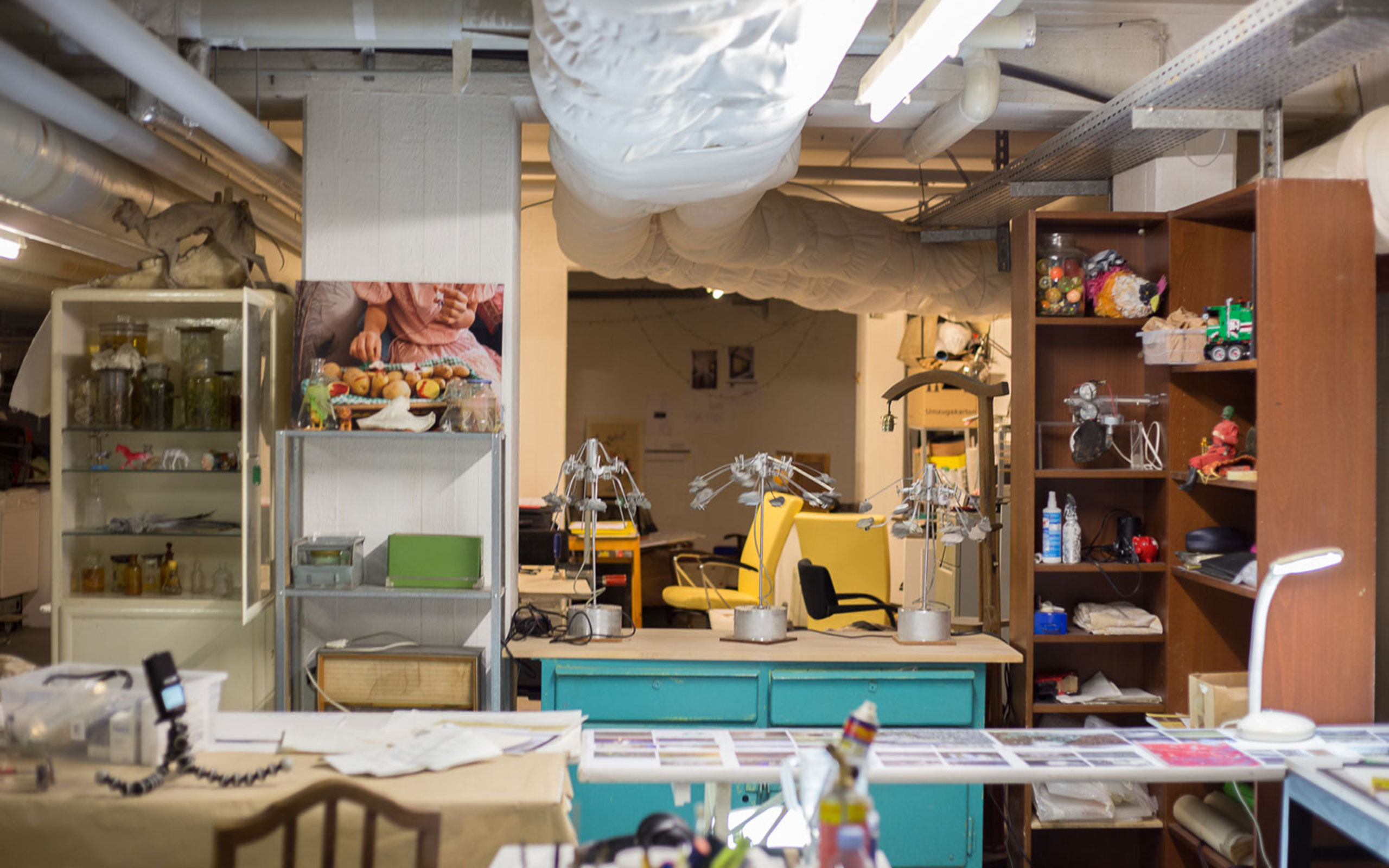
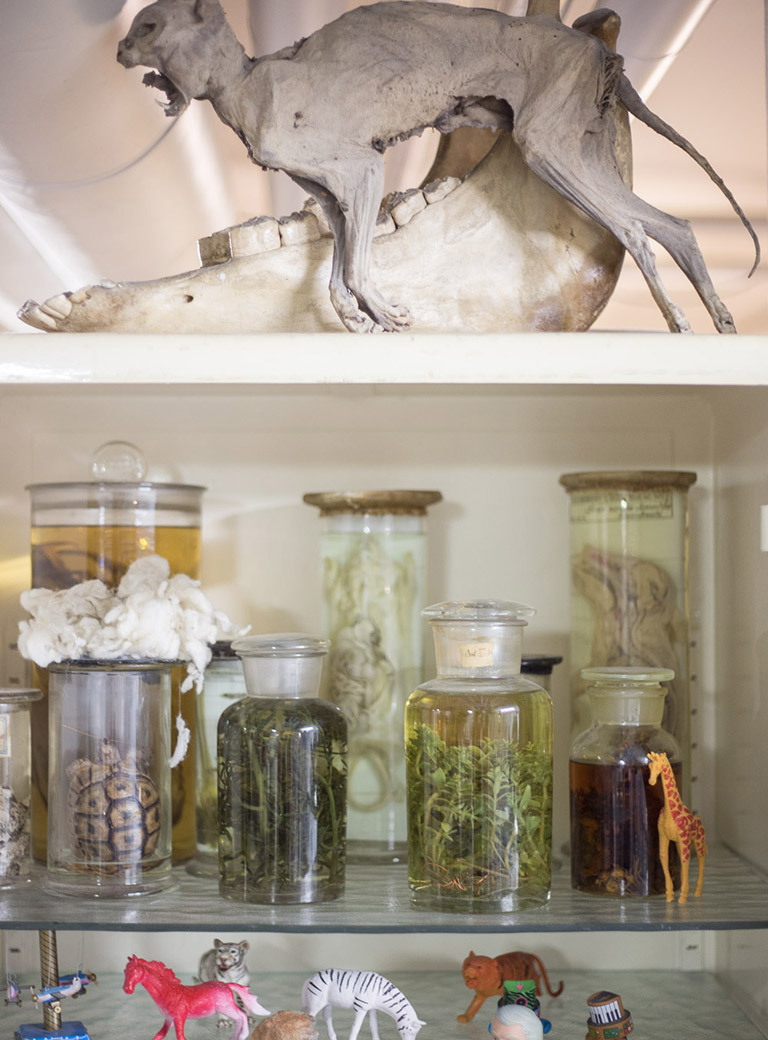
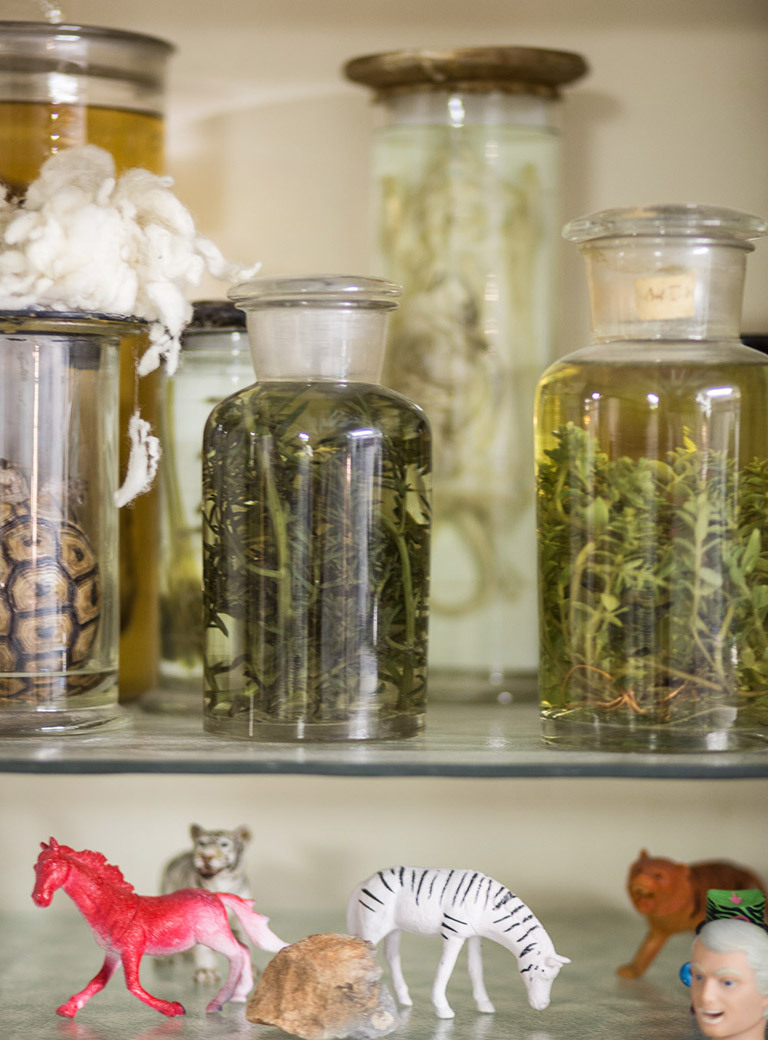
Although we have already touched on it, what can the viewer take from your work?
My works are primarily funny and sensuous and only on second glance does one become aware that they are actually not so funny at all and hopefully this is understood by the viewer. It is quite important to me that many of the works can be interpreted on many levels because one understands more about one’s own perception if one uses different senses instead of just looking or when the context is very academic.
Your works are often time-based, transient and sometimes cumbersome – and therefore not exactly the material for galleries. Rather your work can be seen on Biennales and in institutional contexts: How do you stand in the art market, or rather, how do you position yourself in that market?
I think an artist should be paid, that is very important. The art market is a business. And the artist too, when he/she pursues it in a large context, is a firm. I don’t really like fairs. But it is certainly exciting to sell something at an art fair – one too has to live from something – but I really don’t see me or my work there.
Do you think it is important to cultivate a distinctive style? And how does one attract attention and recognition amidst the big competition on the art market?
I think it happens when the work has substance and quality and impacts on people. Of course, it helps being introduced to the right people, when the work is seen and reviewed by the right people. That accounts for a small percentage, and the major part is simply luck. I believe in my case it is the “style” and how I see things. If I were to bring together all the installations, videos, and sculptures, they would be recognizable as my works, my handwriting. But it is not that I think I have to make my work in a particular way. It is all process and every work stands in relation to the others, like in a small universe everything is connected to everything else.
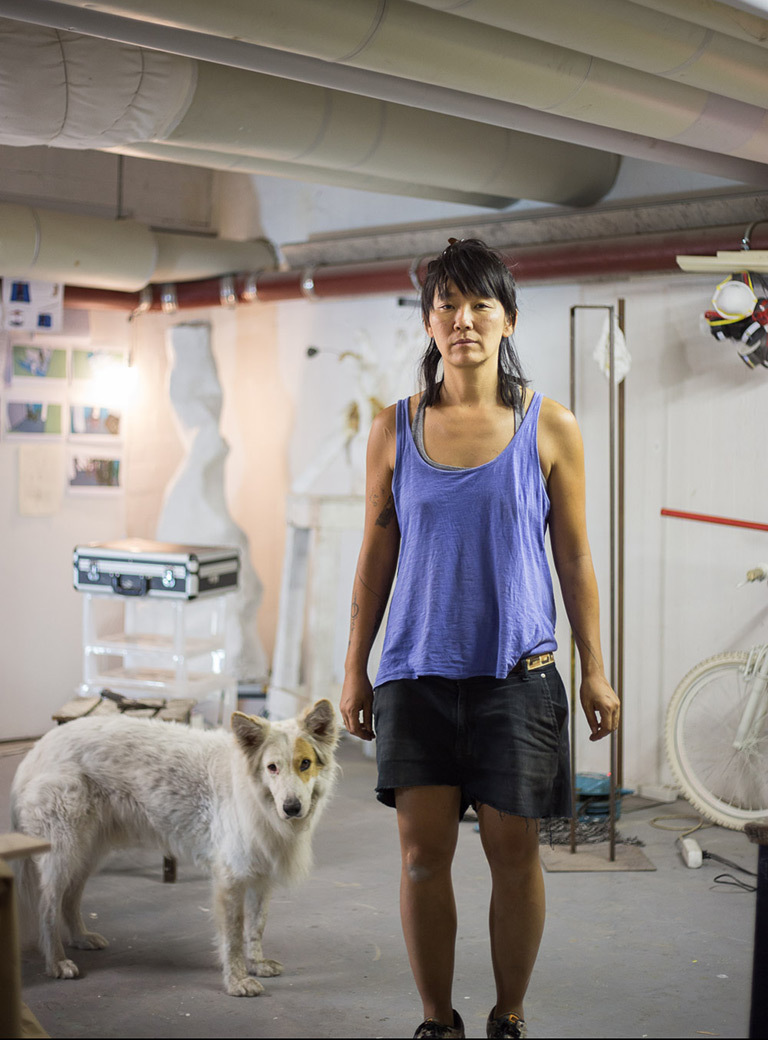
Are your titles actually part of the artwork?
Yes, mostly. It is for example simply Singing Stones. The stones are actually fossils clicking on each other. I collected them in Zumaia, in the North of Spain, where the rocks rise vertically, enabling one to see from when they date, between approximately 65 and 130 million years ago. I collected the fossils now, but they actually produce the sound of the past in the now, that was the idea behind it.
What are you currently planning?
My solo exhibition Ziggy und das Land der betrunkenen Bäume [Ziggy and the Land of the Drunken Trees], the follow-up to Ziggy and the Starfish, my video work for the Riga Biennale that I mentioned earlier, opens at Galerie Wedding in September. For the new Ziggy-film I move from the ocean further inland for which I undertook a research trip to the tundra where the problems are methane holes and below the “timberline” in subarctic tundra regions, where “drunken” trees collapse as a result of melting permafrost due to global warming and hang askew as if intoxicated. In October I have been invited by the Foreign Office to Buenos Aires with the performance Into the Wild, where I will try to bring the Andes and the Amazon onto the table – together with a very well known leading chef. He will cook, but I conceptualize the menu and the table together with people who are familiar with the wild plants of the Andes and the Amazon rainforest.
What do you wish for the future?
I wish that my art will expand further becoming larger so that I can reach more people. For myself I would like to have a large factory or production site with a lot of light and a space to hold only my models, and that I can research and develop prototypes and robots. A laboratory. A real research space! That has always been my childhood dream.
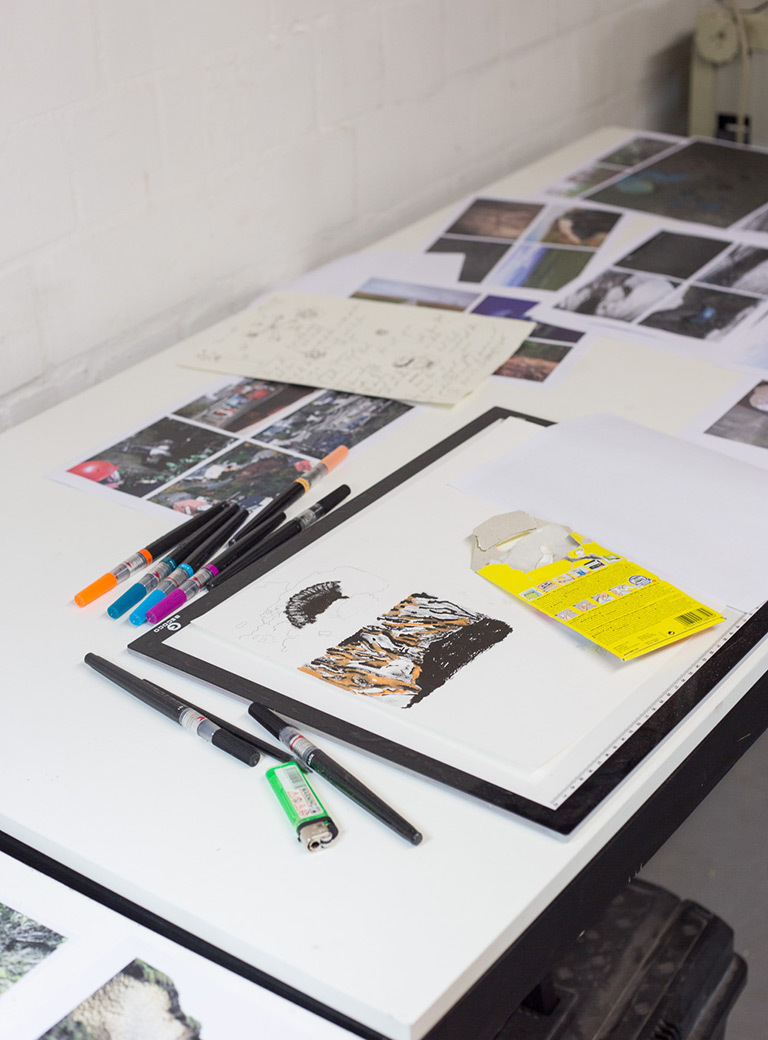
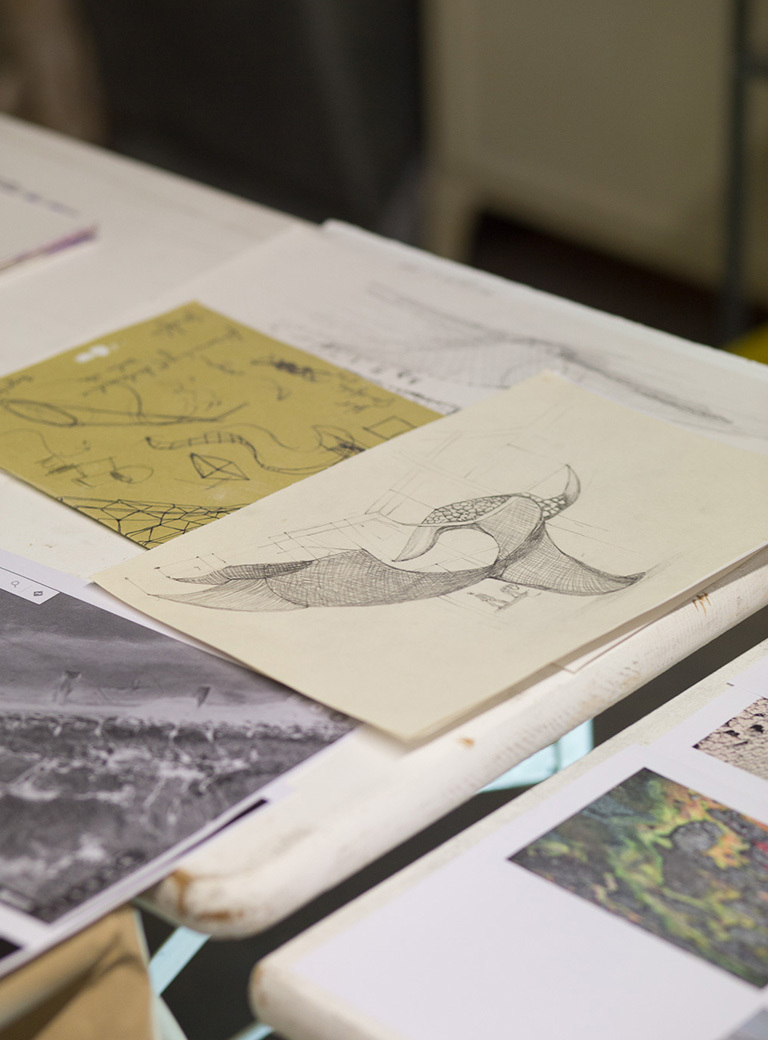
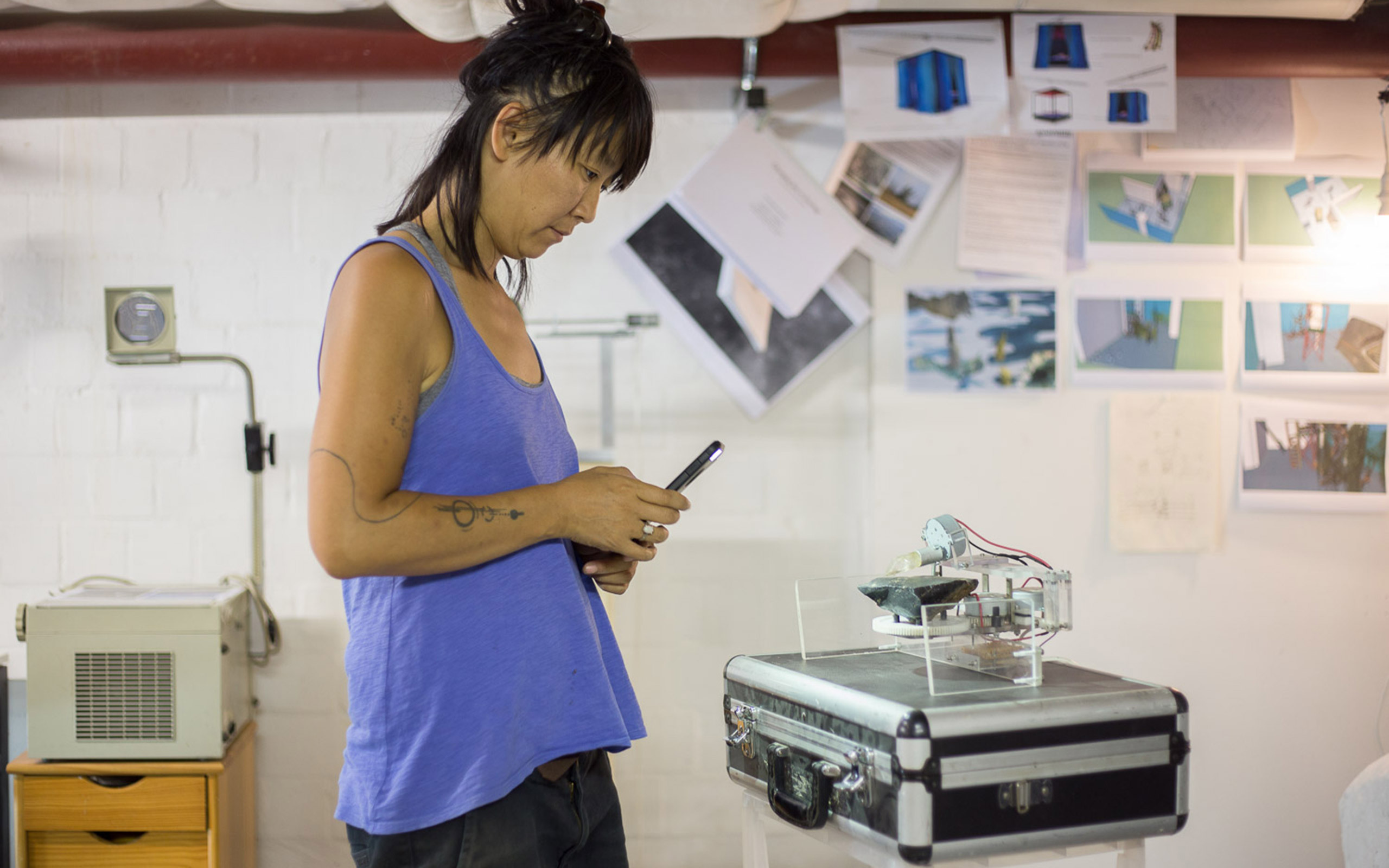
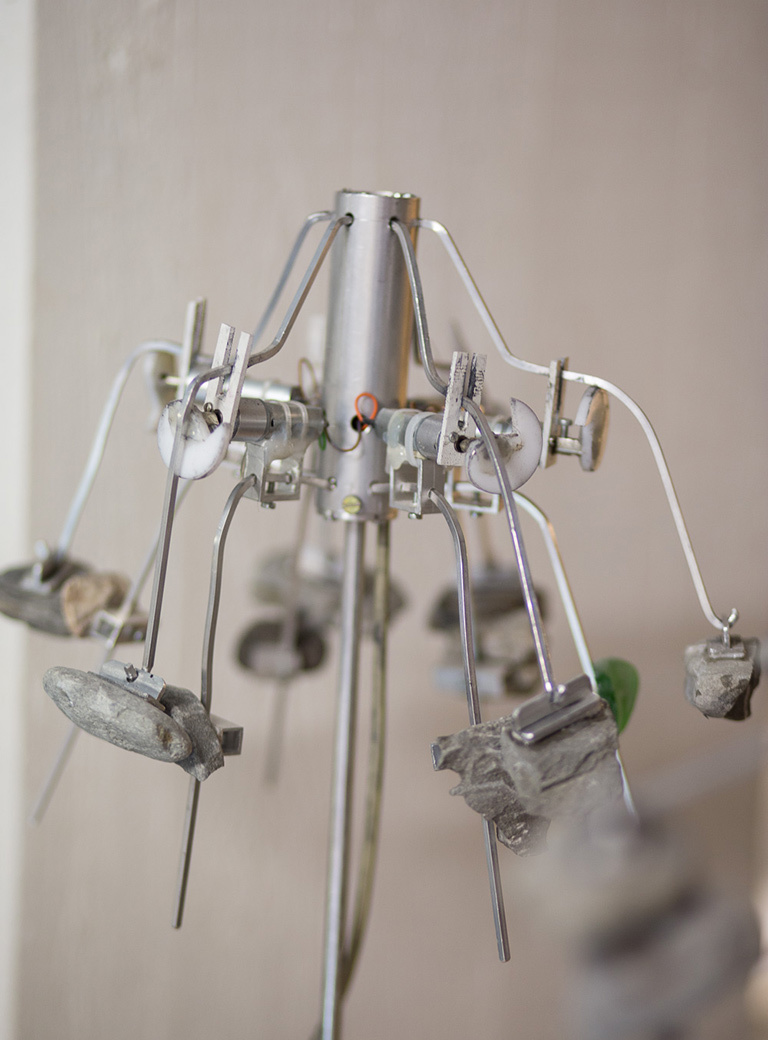
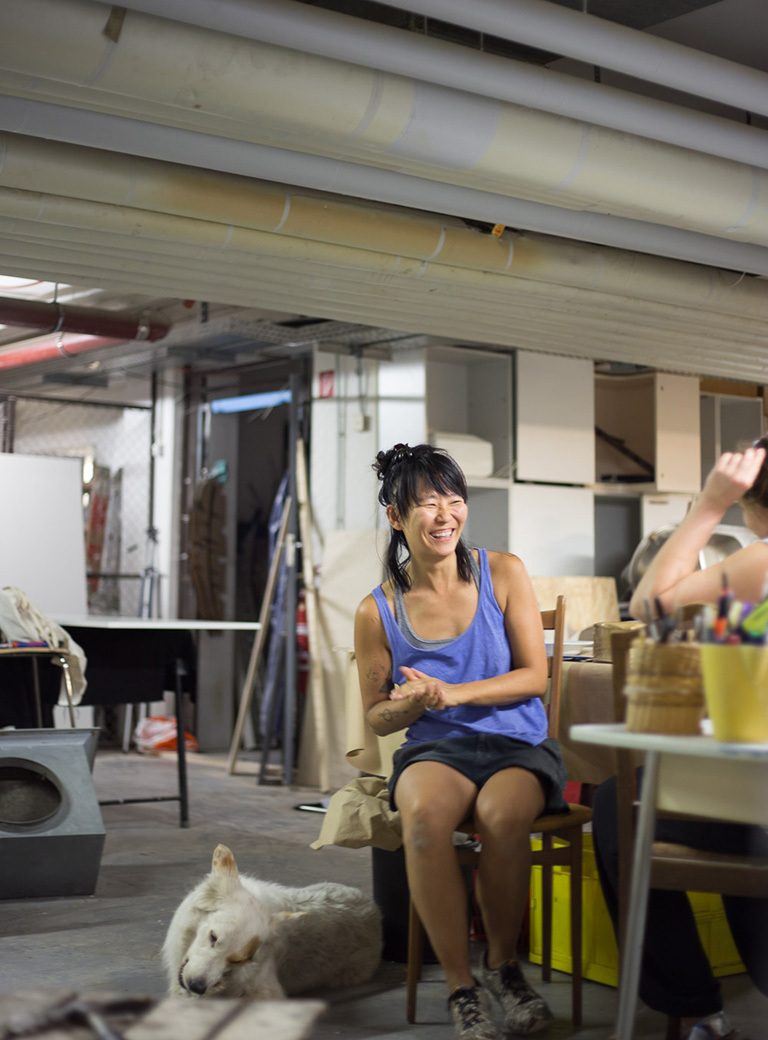
Interview: Chrischa Oswald
Photos: Jasmine Deporta
Links: Anne Duk Hee Jordans Website Galerie balzer projects, Basel Galerie Wedding


